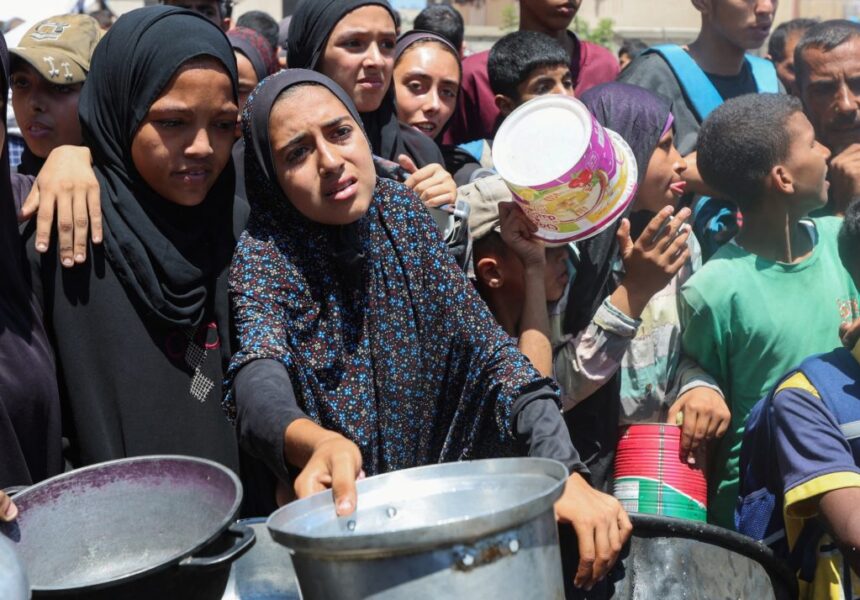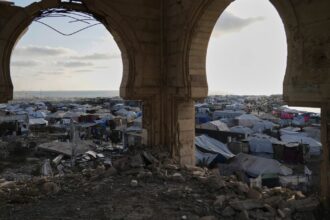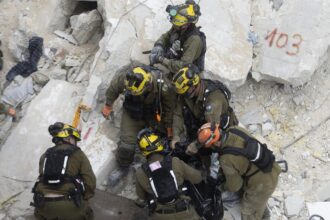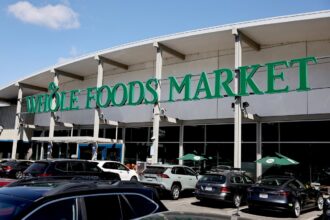The desperation etched on faces in northern Gaza has become a haunting testament to what many aid organizations are now calling a full-blown hunger crisis. As food supplies dwindle to catastrophic levels, Palestinians face an impossible choice: risk death by Israeli gunfire while seeking aid or slowly succumb to starvation.
“We haven’t eaten bread in months,” explains Mahmoud al-Kahlout, a father of three who recently traveled several kilometers on foot to reach a food distribution point. “When we heard aid trucks might arrive, hundreds of us gathered before dawn. People are willing to risk everything just to bring back flour for their children.”
According to the latest UN assessment, over 90% of Gaza’s 2.3 million residents now face severe food insecurity, with conditions in northern areas like Jabalia refugee camp approaching famine thresholds. The World Food Programme reports that the average Gazan currently consumes fewer than 500 calories daily—less than a quarter of recommended intake.
The crisis stems from multiple compounding factors. Israel’s military operations have severely restricted humanitarian access corridors, while damaged infrastructure has crippled local food production. Meanwhile, aid organizations report significant challenges in delivering assistance due to security constraints and bureaucratic hurdles.
“We’re witnessing systematic breakdown of the food distribution system,” explains Dr. Helena Ramsay, emergency response coordinator with International Aid Coalition. “Even when aid trucks make it through checkpoints, the actual distribution often becomes chaotic and dangerous, with people crushed in stampedes or exposed to gunfire.”
The situation has created what Doctors Without Borders describes as “death zones” around aid delivery points. Last week alone, at least 17 Palestinians were killed during chaotic food distribution events, including eight children. Witnesses describe people being shot while attempting to collect packages dropped from humanitarian airdrops.
“I saw a young man collapse just meters from me,” recounts Samira, a 43-year-old teacher from Gaza City who requested her surname be withheld. “He had flour in his hands when the bullet hit him. Nobody could help—everyone was running.”
The unprecedented humanitarian crisis has prompted growing international pressure for sustainable solutions. Canadian Foreign Affairs Minister Mélanie Joly recently joined other G7 counterparts in calling for “immediate and unimpeded humanitarian access” to all areas of Gaza, emphasizing that food insecurity at current levels constitutes a violation of international humanitarian law.
Israeli officials maintain that security measures are necessary to prevent aid from being diverted to Hamas, while emphasizing efforts to increase aid flow through newly established corridors. However, humanitarian organizations argue that current measures fall catastrophically short of meeting basic needs.
Economic impacts extend beyond immediate hunger. Gaza’s agricultural sector—once producing 60% of local food needs—has been decimated. Farmers report inability to access fields, while fishing zones remain restricted. Market analysts estimate rebuilding food security infrastructure will require billions in investment over multiple years.
“This isn’t just about emergency food delivery anymore,” explains Dr. Amjad Nasser, an economist specializing in Middle East development. “We’re witnessing the collapse of an entire food system that supported millions. The long-term implications for health, economic stability, and social cohesion are profound.”
As diplomatic efforts continue and humanitarian agencies work to establish more reliable distribution networks, the daily reality for Gazans remains dire. Many now spend their entire day searching for food, navigating an increasingly dangerous landscape where the most basic human need has become a potentially lethal pursuit.
What will it take for the international community to establish genuine safe corridors that balance legitimate security concerns with the fundamental right of civilians to access food without risking their lives?

























